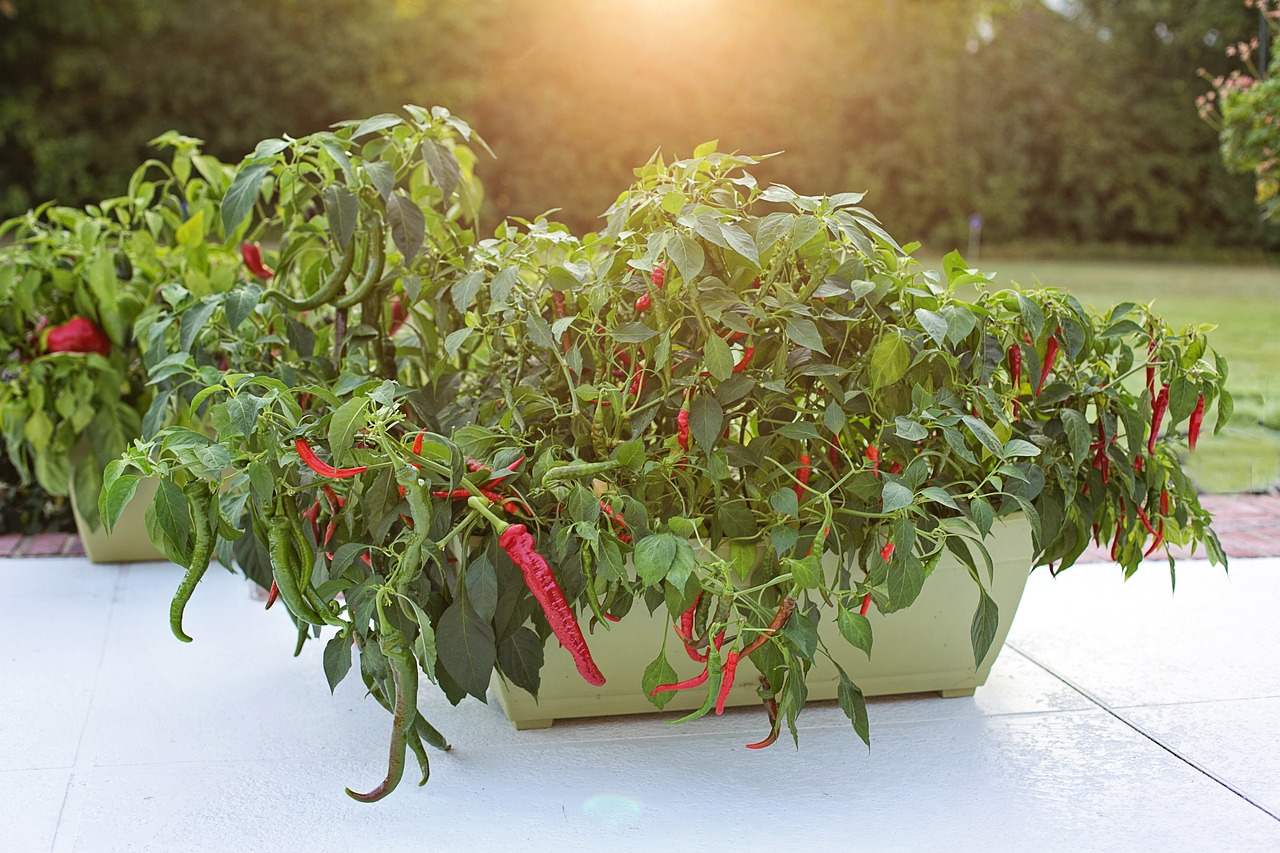There are numerous varieties of peppers. Peppers are classified according to the heat in them, choose a variety that you like. Peppers are easy to grow, they can be growing in any climate especially between the tropic of cancer and the tropic of Capricorn. However, you need to remember a couple of things: you need to first seedling them first and then repot them. Your repotted pepper seedling can sustain a hot climate but the seedlings cannot tolerate hot temperature. Therefore, it is recommended that you grow pepper seedlings indoor and when the seedlings are at least 25 days, you plant them in the outdoors.
In the outdoor environment, there is natural light, thus, when you are seeding peppers outdoors, you don’t have to do much for maintaining lights. Contrarily, when you are seeding indoors, you will have to ensure that the seedlings get enough light. You have to place the seeding tray at the window or provide them lightl through filament bulbs or fluorescent lamps.
You can plant store-bought seeds as well as seeds from the mature pepper. In order to take seeds from the fruit, make sure the fruit is mature and ripe. You also need to wash the seeds properly and dry them in the sun for a couple of days before storing them. Store the seeds in an air-tight jar. While storing seeds you should also have a selection of healthy seeds.
Seeding
Put seeds in a plastic cup and pour water. Keep the cup in the sun until the seeds sink to the bottom. This normally takes 3-4 hours. Soaking seeds speed up the germination process. You can also add 5-10 ml hydrogen peroxide to the water which helps in disinfecting the seeds.
Get a seeding container or seedling tray. Fill with soil. (We have already explained how to prepare soil). Press the soil and make it compact but do not make it too hard. Make about an inch deep and half-inch diameter hole in the soil. Plant the seeds and water through a spray. When you use a sprayer to water the planted seeds, you can thoroughly wet the soil with water. This also allows you to water as much as needed. You need to keep the moisture, however, you should not drench the soil.
Place the tray in a warm area, where it gets a good amount of sunlight or artificial light.
Transplanting
The seeds germinate into seedlings in 20-25 days. The seedlings are ready to be transplanted only when they have true leaves. True leaves mean fully grown leaves. Even though you can repot the seedlings when they have fully grown leaves, repotting should be done only when your seedlings are at least 4 inches. When you repot fully grown seeding, survival rate is higher.
Make a raised bed where you are transplanting your seedlings. Create a good drainage system. Prepare the soil (fertilize and disinfect). While uprooting seedlings from the tray, make sure roots are intact. Watering the seedlings thoroughly will make it easy to uproot the seedlings.
Make about two-inch hole and plant the seedling. Press the soil and make the seedlings stand firmly. After you have planted the seedlings, water the plants.
Daily Care
In order to grow peppers, the soil should have enough moisture level and get enough light. It is necessary to water your plants regularly, however, make sure the soil is not soggy. You should also take care not to let the soil become too much dry. Peppers need 5.5 –7.5 ph level to grow well. You can use agricultural lime to increase ph level and compost to decrease the ph level.
Common Problems
Bending: If your pepper plants bend, taper them to a long stick.
Leaves turning inward: This happens because of ph level in soil, climatic condition and insects. You can cut the leaves that have turned inwards. However, make sure there are enough leaves left in the plant. You can control the insects by spraying white vinegar.
